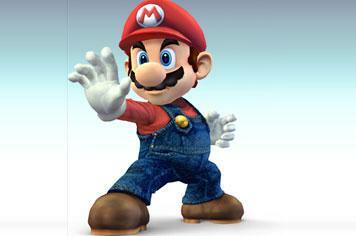Gadget flashback – Nintendo consoles
Nintendo is one of the veterans of the gaming world. It was churning out killer consoles when Microsoft and Sony were thinking about Windows and Wal

Nintendo is one of the veterans of the gaming world. It was churning out killer consoles when Microsoft and Sony were thinking about Windows and Walkmans. Like these…
The Console: NES (1983)
Nintendo’s first console introduced the likes of Mario and Donkey Kong to living rooms worldwide. Dubbed the Famicom (“Family Computer”) in Nintendo’s native Japan, the 8-bit console was launched outside the Far East in 1985, and went on to beat the rival Sega Master System to become the best-selling games machine of its generation. Its controller – with a directional pad on the left and buttons on the right – replaced the joystick as the preferred industry design template.
Nintendo’s most enduring icon Mario’s first major outing on a home console was in this game. A classic of the platform genre, Super Mario Bros blended a simple concept with superb level design and a huge dollop of addictiveness.
The Console: SNES (1990)
The 16-bit successor to the NES was called simply the Super Nintendo Entertainment System (usually abbreviated to Super NES or SNES, and it was called the Super Famicom in Japan). Boasting far more power than its predecessor, the SNES could handle basic 3D effects via its Mode 7 graphics, allowing it to add perspective to games. While the Sega Mega Drive/Genesis was considered a cooler, more grown-up console than the cuddly family friendly SNES, both models found huge success in the market.
One of the SNES’s greatest coups over the Mega Drive was the securing of this arcade phenomenon as a timed exclusive (it didn’t launch on Sega’s console until over a year later). Featuring one-on-one bouts between flamboyant characters and hundreds of special moves, SFII remains one of the best-loved fighting games of all time.
The Console: Nintendo 64 (1996)
Named for its 64-bit CPU, the Nintendo 64 (or N64) boasted advanced (for the time) 3D graphics and an ergonomic controller with rumble abilities and an analogue thumbstick – this would later influence the Sony PS2 and Microsoft Xbox controllers. While the rival PlayStation used CDs for games, the N64 stuck with cartridges, a relatively expensive format. This, coupled with a lack of decent third party titles, meant that the console was something of a disappointment sales-wise, despite a number of top notch first party games including Super Mario 64 and The Legend of Zelda: The Ocarina of Time.
8,000,000 can’t be wrong: Brit-developed Bond romp GoldenEye was one of the most popular N64 games, and one of the most innovative first-person shooters ever. Incorporating stealth and driving elements, sniping and crazily addictive post pub split-screen multiplayer, it’s rightly regarded as a cast iron classic.
The Console: GameCube (2001)
Nintendo’s first optical disc based console, the compact GameCube used miniDVD media to store its games. This meant it lacked the DVD-Video and CD playback skills of its rivals the Xbox and PS2. The GameCube was also the big N’s first Internet-capable console, supporting online gaming via an adapter, and had wireless controllers in the optional WaveBird gamepads. While it featured some well-loved titles including Super Smash Bros Melee and Luigi’s Mansion, it suffered from the same problems as the N64 and only sold 22m units worldwide. The Sony PlayStation 2, meanwhile, shifted 140m.
Taking the survival horror series into a more action-packed direction, RE4 was originally a GameCube exclusive. Despite its gory ultraviolence sitting somewhat at odds with Nintendo’s family friendly image, RE4 is usually regarded as the best title ever available on the GameCube.
The Console: Wii (2006)
After two disappointing consoles, Nintendo was in danger of falling behind in the videogame race to Sony and Microsoft. So what did it do? Rather than attempt to outpower the graphically advanced PS3 and Xbox 360, the Wii completely reinvented the way games were controlled – its motion-sensitive Wii Remote controller allowed gamers to interact with titles in a new way. While many hardcore gamers were turned off by this approach (and the perceived lack of killer titles), the motion controls have introduced gaming to a whole new demographic, and this has made the Wii by far the most successful console in the current generation. It has sold over 70m units since its launch, and continues to shift at an impressive rate.
Currently the third best selling console game in history, Wii Fit is arguably not much of a game at all. Using the Wii Balance Board peripheral, it offers a range of activities designed to promote fitness and wellbeing in the user. These are centred around yoga, aerobics, balance and strength training.
More stories on Stuff.tv
– Gadget Flashback – Sony PlayStation
– Gadget Flashback – Nokia Nseries
– Gadget Flashback – Sony Handycam
– Gadget Flashback – Canon IXUS
– Gadget Flashback – Sony Walkman



